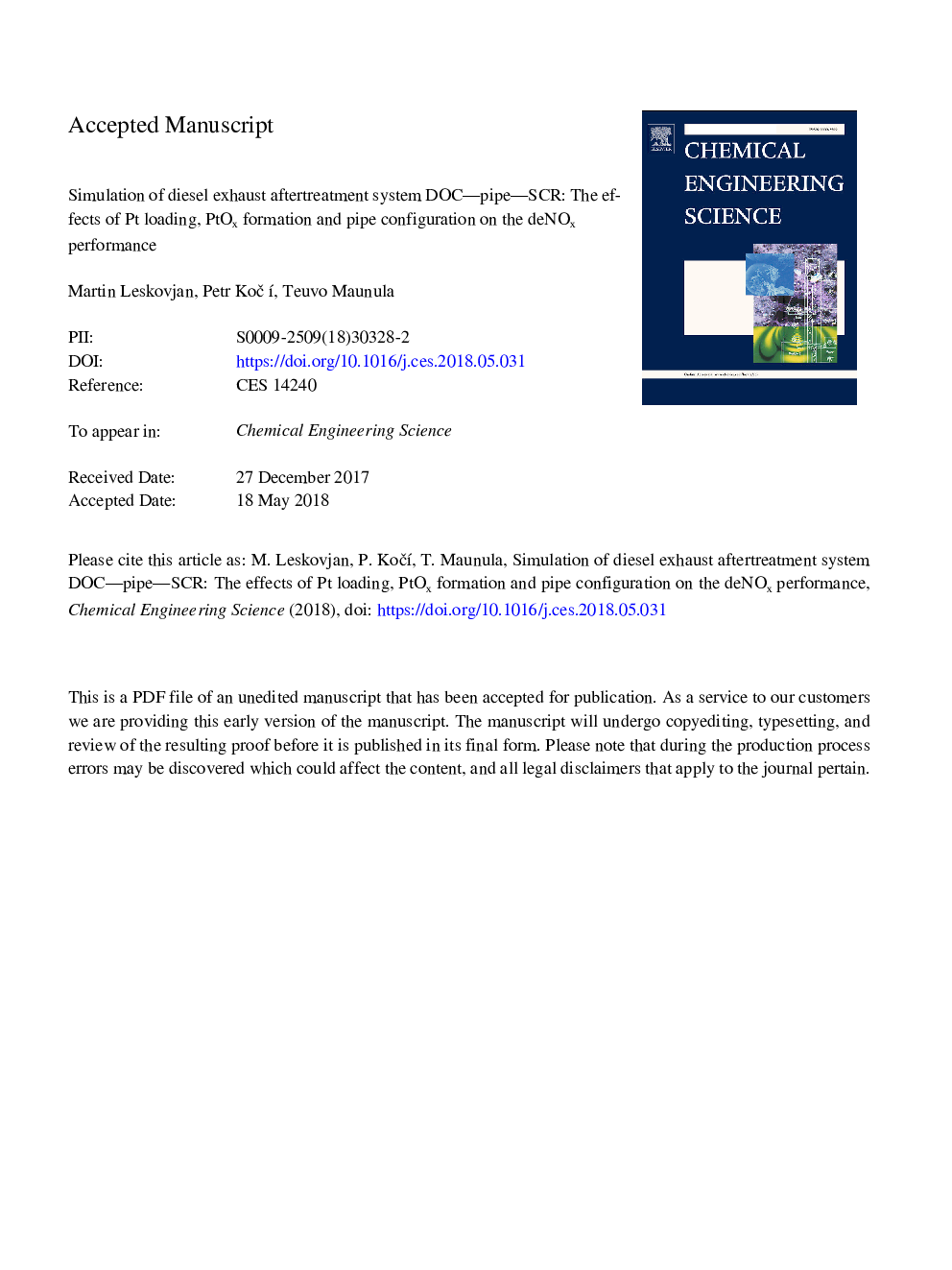| Article ID | Journal | Published Year | Pages | File Type |
|---|---|---|---|---|
| 6588348 | Chemical Engineering Science | 2018 | 40 Pages |
Abstract
A combined exhaust aftertreatment system consisting of a diesel oxidation catalyst (DOC), pipe and selective catalytic reduction of nitrogen oxides (SCR) is studied in this paper by the means of mathematical modeling and simulations. Pt/γ-Al2O3 DOC and V2O5-WO3/TiO2 SCR catalysts for heavy-duty Diesel engines are examined. First, spatially 1D models of the DOC, SCR and pipe are introduced and calibrated using the measured engine test data. The models are then employed in a simulation study of the effects of Pt loading, PtOx formation and pipe configuration on the NO2 yield in DOC and the resulting deNOx performance of the SCR in the driving cycles ETC and WHTC. It is shown that there exists optimum washcoat loading in the DOC with respect to NOx conversion in SCR and that the minimization of heat losses in the connecting pipe can further improve the NOx conversion. Finally, the decrease of NO oxidation activity in DOC due to PtOx formation and its impact on NOx conversion in SCR is quantified over the repeated driving cycles, showing 2-10% difference between the deNOx performance with the pre-reduced DOC and after few hours of operation under oxidizing conditions. Based on the simulation results, an improved configuration of the system is proposed that achieves up to 6% higher overall NOx conversion.
Keywords
Related Topics
Physical Sciences and Engineering
Chemical Engineering
Chemical Engineering (General)
Authors
Martin Leskovjan, Petr KoÄÃ, Teuvo Maunula,
